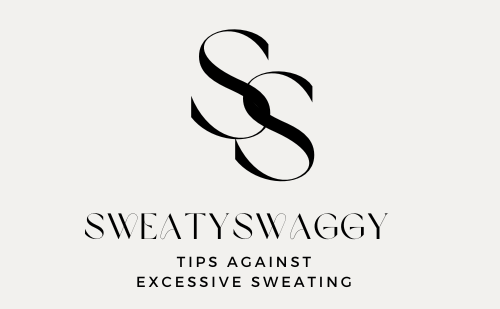You tried antiperspirants to treat your hyperhidrosis and that’s not enough?
Or it’s your hands or feet that sweat excessively?
Botox, Iontophoresis, and ETS Surgery are very intrusive ways to treat hyperhidrosis, so you want to try a simpler option first to see if it would suffice: aluminum solutions or anticholinergic wipes.
Below are details on what these are, and on the pros and cons of these solutions.
What is it?
Aluminum Solutions & Anticholinergic Wipes have in common that they are the first thing a dermatologist would prescribe to try and treat your excessive sweating (hyperhidrosis). Because it’s rather simple: you can buy it over-the-counter and it’s painless.
1 – Aluminum lotions and wipes:
- The main active component is Aluminium Chloride.
- You can apply it on your feet, hands, breast, tights, etc.
- You need to apply it at night before going to bed.
- It takes 2-4 weeks to become effective.
There are 2 main brands on the market right now: SweatBlock and Carpe.
What’s the difference between Sweatblock and Carpe?
Both brands have lotions and wipes. Each of their websites provides a comparison with the other brand, that’s actually pretty funny. And basically, the difference is that SweatBlock has a higher concentration of aluminium than Carpe. So Sweatblock is stronger (think clinical level) but that can lead to more skin irritations. Carpe is weaker so it’s less irritating but then it’s for less severe cases. Whichever you choose is up to your needs.
It may worth starting with Carpe, the less irritating one, and if that doesn’t work, step up to Sweatblock.
I personally tried aluminium chloride and that didn’t treat my hyperhidrosis. I guess my case was too severe, but who knows, it may work for you!
Either way, it’s always worth a shot, you can try it out for a few weeks to see how it goes. And then meet with your dermatologist to discuss the results.
2- Anticholinergic Wipes
- The name of the wipes are Qbrexza, by the company Dermira.
- It’s rather new in the hyperhidrosis treatment world since it was approved by the FDA in 2018.
- The main active component is glycopyrronium.
- This is only for armpits tough.
- You need a doctor’s prescription to get it.
- The risk of potential side effects are more important.
Pros of Aluminum lotions or Anticholinergic Wipes:
- Reasonable price: According to Qbrexza’s website, a box of wipes is between $30 and $75 depending on your insurance. And the Sweatblock and Carpe lotions or wipes are around $15-20 per box/bottle. So, these are not too expensive to try out. If they work for you and you refill regularly, that’s still a little budget each month. But if it helps fix your hyperhidrosis then it’s totally worth the splurge, right?
- Applies to most: What’s nice about the aluminum solutions is that it can be applied on hands, armpits, feet, etc. so it can be used by most of us. The Qbrexza wipes seem are only for armpits though.
- Painless: Applying a wipe is clearly less painful than getting botox injected or going through an iontophoresis session.
Cons of Aluminum lotions or Anticholinergic Wipes:
- Daily: You need to apply it every day, pay attention to washing your hands thoroughly, etc. So this impacts your daily routine. But we brush our teeths, shower, apply deodorant, etc. every day, so applying another thing once a day is not that bad.
- Skin irritations or side effects: the aluminium chloride will mainly give you skin itches and irritations (36% moderate and 14% severe according to this International Hyperhidrosis Society article).
Conclusion
Lotions and wipes are a great, lower-risk option to try and treat your excessive sweating issue with.
You’ll want to start with the less risky one, Carpe. Then if that doesn’t work, try SweatBlock. And if that doesn’t work either, try Qbrexza.
But before you these lotions or wipes, speak to your doctor and dermatologist. Excessive sweat can be caused by many conditions, so you want to make sure you suffer from excessive sweating (hyperhidrosis) before you start trying out treatments for it.
If you are amongst the unfortunate ones for whom these solutions are not helping with hyperhidrosis – like me 🙂 – then it’s time to try out the next level of hyperhidrosis treatment: iontophoresis.
Disclaimer: I’m not a doctor. I’m writing based on my own personal experience, and I added in some more details based off research. I’m simply giving you an overview of the options available to you to deal with hyperhidrosis, so you can have an understanding of what’s available when you talk to your doctor. Contrary to most things you will find online, this overview is not written from a medical or objective point of view, but written from the individual, unique, point of view of someone who went through most of the options. This is based on what I liked/didn’t like when I was trying each option.






Pingback: Treat hyperhidrosis with Iontophoresis: the pros and cons - SweatySwaggy
Pingback: Treat hyperhidrosis with Antiperspirants: the pros and cons - SweatySwaggy
Pingback: What it's really like to use a iontophoresis machine - SweatySwaggy
Pingback: Treat hyperhidrosis with Botox